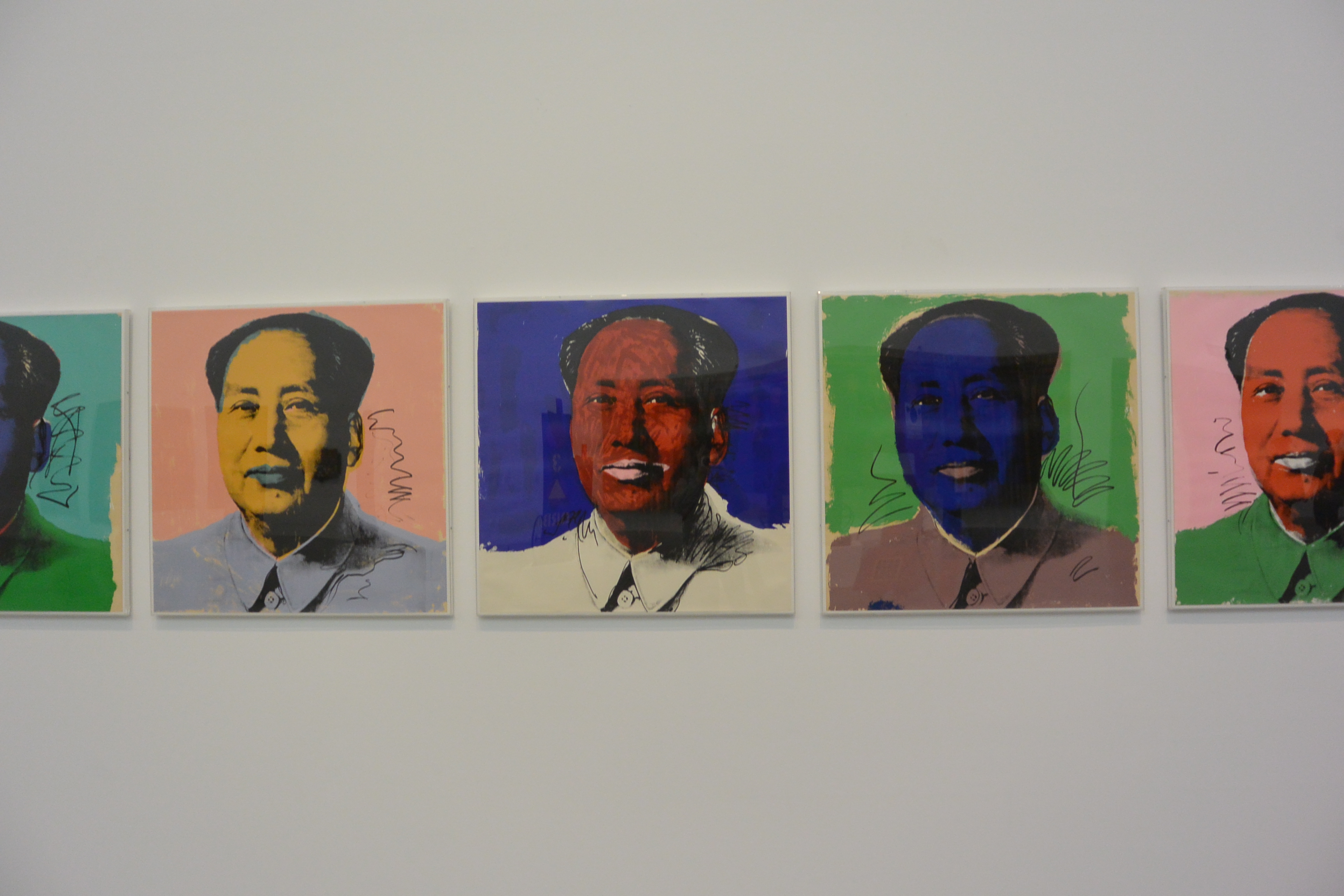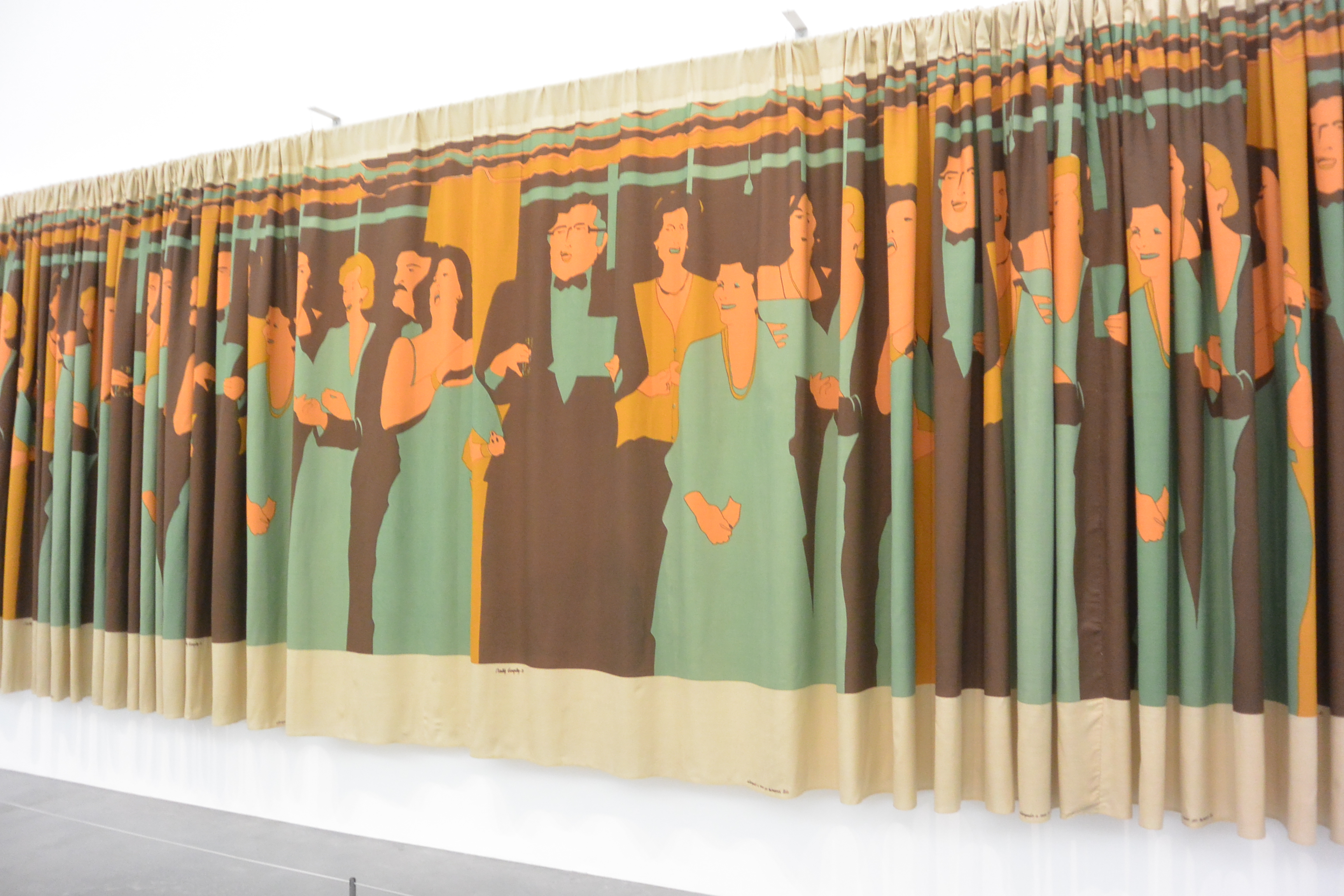Media Networks
From Londonhua WIKI
Media Networks
 Media Networks Exhibit | |
| Location | Tate Modern, London |
|---|---|
Overview
The turn of the twentieth century paved ways for artists to find new mediums and styles to depict their strong message. Messages ranged from political hatred, to biblical stories, to perceptions of women. These messages were not subtle. The artist made sure the viewer did not misinterpret the meaning or miss it all together.
Contents
Artists
Andy Warhol
Andy Warhol (1928-1987) was born in Pittsburgh, Pennsylvania, U.S. He attended university at Carnegie Mellon. He is well known for his printmaking, painting, photography, and cinema works. He is the leading figure of the visual art movement (pop art). His most famous pop art pieces include Marilyn Diptych and Mao Tse Tung (seen below). Marlin Diptych shows 50 images of Marilyn Monroe from the movie Niagara. The brightly colored left side depicts here life as a vibrant young actress. Throughout history, the left side has been associated with feminism and creativity so it is only fitting the left side of the painting portrays her life. The right side of the painting shows her death. Mao Tse Tung represents Warhol's artistic style being applied to address the cult personality surrounding the leader.
Viktor Pivovarov
Viktor Pivovarov (1937-Present) was born in Moscow, Russia. He is a children's book illustrator and artist. He is known to be a leading artist in the Moscow Conceptualist artistic movement during the 1960's. His work showed the soviet lifestyle and often showed criticism and nostalgia towards it. The paintings shown below are from a collection called Apartment 22. The paintings show the everyday experience of enforced communal living and reflect the boredom, loneliness, and violence not shown in official portrayals of Soviet life. His painting shown below also showed the danger and problems with Soviet life.
Beatriz Gonzalez
Beatriz Gonzalez (1938-Present) was born in Bucaramanga, Colombia. She is considered to be one of the founders of current Columbian Art. Growing up during the La Violencia influenced her view of Columbian society and politicians. Shown below is the Interior Decoration. During the time it was created, the Columbian president, Julio César Turbay Ayala, was photographed by the popular press enjoying himself at parties. This was concerning to citizens because it showed the president was oblivious to the violence being carried out by his government: torture and detentions. What made it all the more concerning was he was not seen enjoying himself once, but quite regularly. Gonzalez translated this imagery into a repeating pattern on 140 meters of curtain fabric. It became a metaphor for corruption hiding the 'curtain' of public image.
John Heartfield
John Heartfield (1891-1968) was born as Helmut Herzfeld in Berlin, Germany. He was a pioneer of photomontage (cutting up photographs and combining elements to create a new image). He changed his name to Heartfield during the First World War to protest the rampant nationalism it brought. He dedicated his work to mocking the hypocrisy and cruelty of the government. He published his work in the Communist Weekly (AIZ). Over his career he contributed 237 pieces to the journal. He made fun of the Nazis quite often, poking fun at their violence and fanaticism. When Hitler became Chancellor in 1933 his attacks became more urgent because Hitler imposed censorship on anti-Communist material. Heartfield was able to escape to Prague where he continued to publish his works until 1938. Shown below are some of his pieces.
References
- Mao, 1973. (n.d.). Retrieved May 15, 2017, from http://www.artic.edu/aic/collections/artwork/47149
- Viktor Pivovarov's Biography. (n.d.). Retrieved May 15, 2017, from http://www.saatchigallery.com/visitor/visitor.htm
- Gotti, S. (2015, September). Beatriz González. Retrieved May 15, 2017, from http://www.tate.org.uk/whats-on/tate-modern/exhibition/ey-exhibition-world-goes-pop/artist-biography/beatriz-gonzalez
- John Heartfield - Media Networks at Tate Modern. (n.d.). Retrieved May 15, 2017, from http://www.tate.org.uk/visit/tate-modern/display/media-networks/john-heartfield







